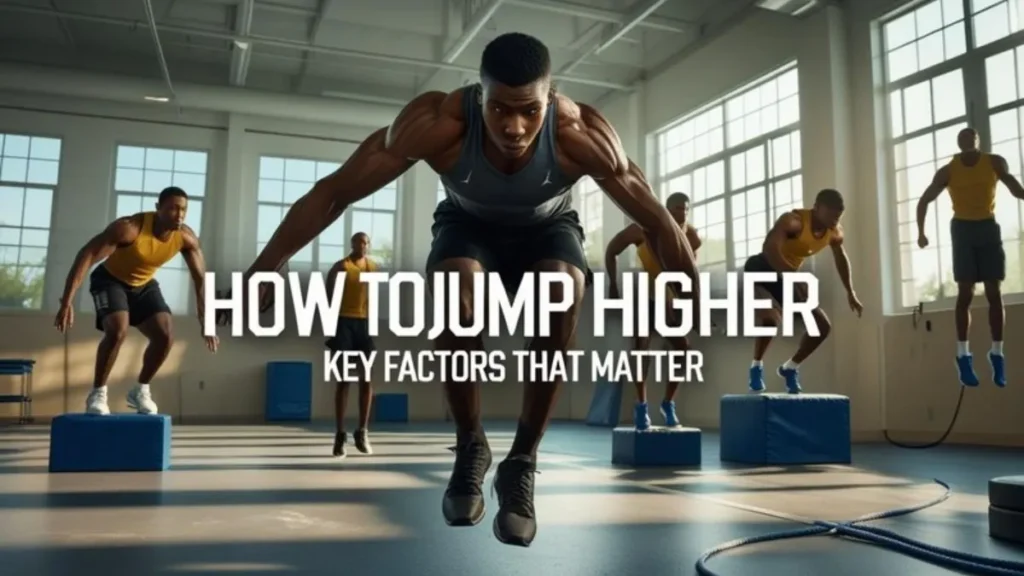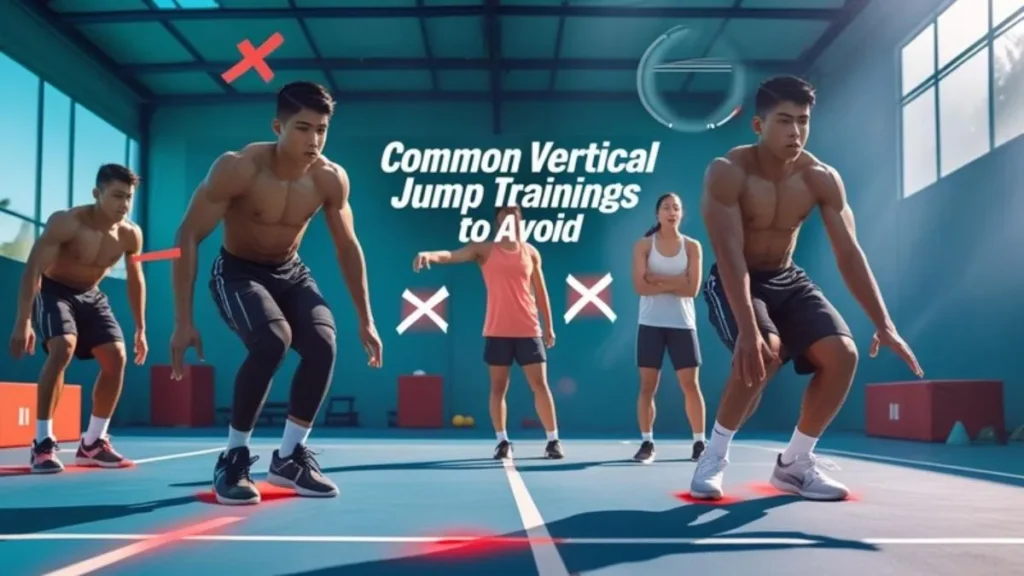Improving your vertical jump is not just for dunking a basketball—it’s a powerful skill for all athletes. Whether you play volleyball, football, or track, a stronger leap gives you a huge edge. But how to increase vertical jump the right way? It takes more than just jumping higher.
You need smart training, real strategy, and consistent effort. With the right mix of vertical jump training, explosive power exercises, and recovery, you can seriously increase jump height. This guide breaks down the science, drills, and techniques to help you get real results. Ready to soar? Let’s unlock your full potential and build a vertical jump that turns heads.
What Muscles Power a Vertical Jump?
When it comes to how to improve vertical jump, understanding your body is key. The main muscles involved are your glutes, quads, hamstrings, calves, hip flexors, and core. These powerhouses work together to create explosive force.
If one of these muscles is weak, your whole jumping mechanics can fall apart. So building balanced strength across your lower body and core is essential. A weak core or tight hips can reduce how much force you generate off the ground. That’s why core and hip explosiveness should never be skipped.
How to Jump Higher – Key Factors That Matter
There are several factors that affect how to get a higher vertical. Strength, speed, timing, and flexibility all play a role. Good landing mechanics and coordination also help you avoid injury while maximizing your leap.

Another major factor is how well your muscles “fire.” This is called neuromuscular activation. Practicing reactive jump training and jump transition techniques helps you activate muscles faster. That means more height, quicker takeoff, and smoother landings.
Best Strength Training Exercises to Increase Vertical Jump
Strength is the foundation of your vertical jump. You need power from your legs and hips to explode upward. That means focusing on lower body strength workouts like squats, deadlifts, and step-ups.
A good vertical jump training program should include single-leg strength drills too. These boost balance and control, which are key for unilateral leg power. Here is a simple strength training chart:
| Exercise | Sets | Reps |
| Back Squats | 4 | 6-8 |
| Romanian Deadlifts | 3 | 10 |
| Walking Lunges | 3 | 12 |
| Bulgarian Split Squats | 3 | 8 each leg |
Explosive Plyometric Workouts for Higher Jumps
Once you’ve built strength, it’s time to add explosive power exercises. This includes plyometric training like depth jumps, broad jumps, and lateral jump exercises. These drills increase your speed and reaction.
Plyos also improve multi-directional movement, which helps with sport-specific conditioning. For example, adding rotational jumping drills mimics game-like moves. It also improves your body’s ability to store and release energy quickly.
Structuring Your Vertical Jump Training Program
Creating the right balance is important. Your workouts to increase vertical should mix strength, plyos, and mobility. You should also schedule your workouts based on how advanced you are.
Here is a basic 4-day training split for vertical jump training:
| Day | Focus |
| Monday | Strength + Jump Technique |
| Tuesday | Mobility + Recovery |
| Thursday | Plyometrics + Speed Drills |
| Saturday | Full Body Power Session |
Increase Vertical Jump at Home – No Gym Needed
If you don’t have access to a gym, don’t worry. You can still increase vertical jump at home with jumping workouts like squats, tuck jumps, and jump rope for athletes. A great jump higher workout doesn’t need machines.
Try using resistance bands or stairs for added intensity. Bodyweight vertical exercises can still be very effective, especially when done explosively. Focus on form, speed, and control with each rep.
Nutrition & Recovery for Explosive Gains
You can’t out-train bad recovery. Your muscles grow and repair after workouts, not during. To support this, eat balanced meals rich in protein, carbs, and healthy fats.
Hydration and sleep matter too. Aim for at least 7-8 hours of sleep and drink plenty of water. Supplements like creatine and beta-alanine can also support explosive power exercises and jumping workouts.
Common Vertical Jump Training Mistakes to Avoid
Many athletes make the mistake of training too much or using poor technique. Overtraining leads to injury and burnout. Others forget to train both sides of the body, which reduces functional athletic performance.

Avoid skipping your warm-ups and cooldowns. Poor landing mechanics can also stress your knees. Always take time to recover and improve your mobility. Quality over quantity wins every time.
Advanced Techniques to Maximize Your Vertical
For serious athletes vertical jump training goes beyond basics. Using contrast training, like pairing squats with jumps, boosts power. Sports performance drills with smart tech can track progress.
Elite jumpers also add jump transition techniques, like moving from horizontal to vertical jumps. This mirrors the NFL combine jump test, where speed and control matter most.
Final Thoughts – Unlock Your Maximum Jump Potential
Now you know exactly how to improve vertical jump. By combining plyometric training, lower body strength workouts, and good jumping mechanics, you can seriously boost your leap.
Remember, improvement takes time. Keep pushing, stay consistent, and track your progress. Whether you’re chasing a dunk or just trying to increase jump height, the sky is your limit. Stick to the plan, and soon, your vertical will turn heads on and off the court.
Looking to measure your vertical jump like a pro? Stay tuned for our next article where we break down the best jump test tools and how to use them!
FAQS
Average vertical jump NBA:
The average NBA vertical jump is around 28 to 34 inches, with elite players reaching 40+ inches.
What is the average vertical jump for a man:
Most adult men have a vertical jump between 16 to 20 inches.
What is the average vertical jump for a 14-year-old:
A typical 14-year-old has a vertical jump around 14 to 17 inches.
Average vertical jump for a 13-year-old:
The average vertical for a 13-year-old is usually 12 to 16 inches.
What is the average vertical jump for a 15-year-old:
Most 15-year-olds jump between 15 to 18 inches on average.
Average vertical jump in feet:
This translates to roughly 1.3 to 2.8 feet, depending on age and training.
Average vertical jump height:
Average jump height ranges from 12 to 20 inches, depending on age and fitness.
Average vertical jump by age:
Jump height increases with age and peaks in early 20s; kids average 12–17 inches, while adults average 16–20 inches.

